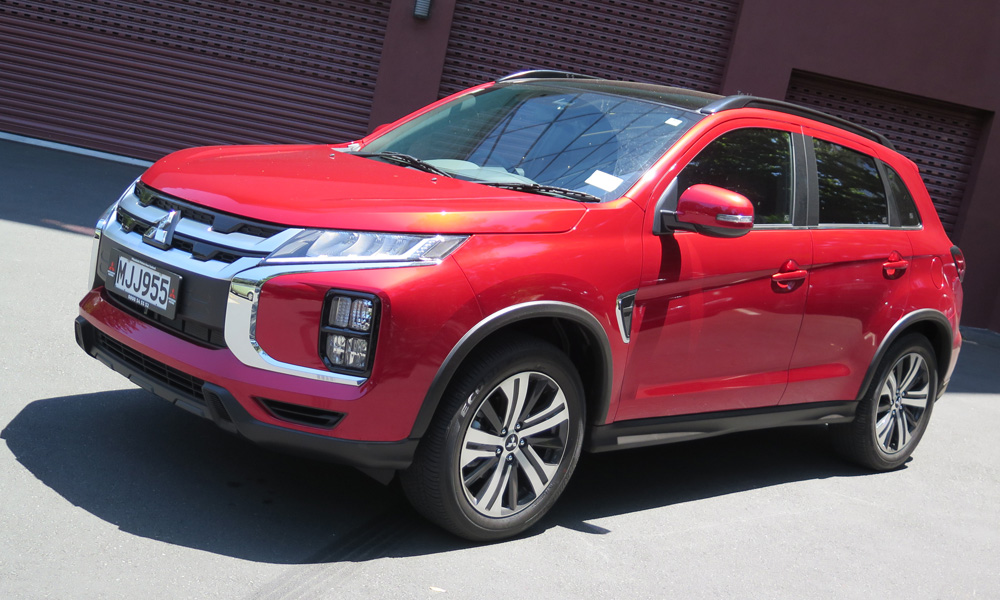
Mitsubishi Outlander PHEV 2022 car review
New Zealand’s 2021 top-selling passenger car has been joined by a new and improved plug-in hybrid electric cousin – the Next Generation Outlander PHEV.
22 January 2020
Mitsubishi’s ASX has been a steady performer in its compact SUV class. It’s now had an overhaul, and most notably there’s no longer a 4WD version – that niche will be filled by Mitsi’s Eclipse Cross.

Instead the ASX will focus on those looking for value from a high-riding wagon, an urban commuter that’s capable on the open road too.
The three-variant range now opens at $29,990 with the 2.0 LS, and tops out with the $34,990 VRX, which was the version we trialled.
The facelift has imparted a bolder, arguably more macho look up front, and a more emphatic one out back. All the lamps are now LED, with auto levelling for the VRX headlights, there are new alloy wheels and even a new tyre design, pitched as quieter – something we did notice, and appreciate.
All models get some updates to trim flourishes, and an eight-inch touch screen, compatible with Apple CarPlay and Android Auto, the latter also allowing pinch-zoom on google maps. The lower grades get cloth trim, while this VRX has a new grain material for the “leather appointed” seats, with synthetic leather for the second row centre seat.
While the entry models stick with a 2.0-litre engine, this VRX has the 2.4, with more power – now 125kW and 226Nm – and a greater thirst, claimed at 7.9l/100km, 0.3l/100km more than the 2.0.
Also new, the interior auto dimming mirror, auto rain-sensing wipers and auto leveling headlights, which no longer get washers. Inside there’s now the colour LCD multi display meter, and black headlining, plus those trim changes, and reverse warning sensors, a boon in most urban conditions.
Clamber in and you’ll find a cabin easy to feel comfy in, with great ergonomics for most, and functions that are easy to access and use: some may find the touchscreen a tad over-simple, but it’s easy to navigate, and after all, this isn’t a car aimed at early-adopting tech geeks.
It’s a nice car to drive on undemanding roads, performing as you’d expect for a family runabout. However, get to steeper hills or sharper acceleration requirements, and you’ll be reminded this is no sports car, but a family runabout.
That said, our tester’s regular route involves quite a bit of tight, hilly swervery, and ASX feels confident enough to keep momentum up, understressing the engine while enjoying swooping through bends. The steering has a nice heft to it too, though a keen driver may feel it lacks feedback. That said, ASX isn’t aimed at the gungho wheelman or woman. The likely buyer will enjoy its unfussed progress at real-world speeds and conditions, the area in which ride is also at its best.
If you still feel your ASX doesn’t stand out enough in the school or office car park, you can buy an assortment of accessories to jazz it up, including a front or rear skid plate – which seems a bit OTT for a 2WD, it must be said. But will that be enough? After all, this model first launched a decade ago, and updates since have been facelifts rather than clean-sheet designs. Rumours suggest Mitsi is postponing any major revamp until it gets fully on board with the array of platforms and other tech now accessible since its alliance with Renault, inked in 2017.
Mitsubishi NZ hopes that the Eclipse Cross will satisfy those Kiwis who simply have to have 4WD, while globally that model could take over the ASX slot as it is today, allowing the next new-gen ASX to be a tad more compact, pitching it against the smaller bracket – with vehicles like Nissan’s stylish Juke.
Those shopping in the ASX bracket have some quality players to consider – think Mazda CX-3, Suzuki Vitara and even Citroën’s C3 Aircross. But the ASX does deliver a good level of equipment, a five-year warranty, and an attractive look that feels up-to-date. Best of all – and in part possible precisely because the ASX basics are now tried and true – it’s sold at an equally attractive price.
Last year it lead its sales bracket with 2669 sales, well ahead of second-placed Hyundai Kona (1837), or the Honda HR-V (1474), Suzuki Vitara (1363) and Holden Trax (1362). The update should be enough to see it continue its successful trajectory.
| At a glance | |
|---|---|
| Model | Mitsubishi ASX VRX |
| Engine | 2.4-litre DOHC petrol |
| Price | $34,990 |
| ANCAP safety rating | 5 |
| Power and Torque | 125kW at 6000rpm, 226Nm at 4100rpm |
| Transmission | CVT with six-speed sports mode paddle-shift |
| Fuel economy | 7.9l/100km |
| Towing capacity | 1300kg |
| 2WD/4WD/AWD | 2WD |
| Seating capacity | 5 |
| Luggage capacity/payload | 393 litres (seats up), 1143 litres (seats folded) |
